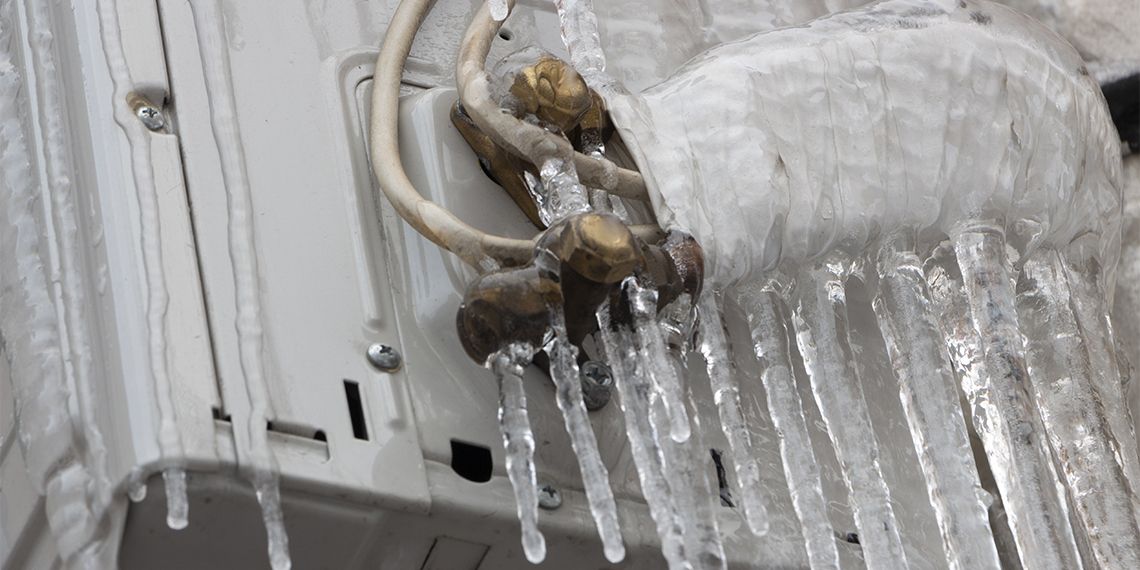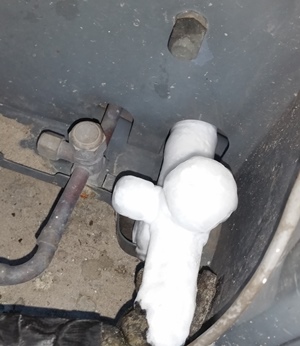They are making a few good pointers related to Have a Frozen AC Line? Here’s How to Fix It as a whole in the article which follows.

Introduction
Finding that your air conditioner pipe is frozen can be worrying, especially during warm summer months when you count on your ac unit the most. Comprehending what to do in such a situation is essential to stop additional damage to your air conditioning system and ensure your comfort inside your home.
Understanding the Causes
Numerous variables can add to the cold of an a/c pipeline. Comprehending these reasons can assist you resolve the concern effectively.
Absence of Airflow
One usual reason for a frozen air conditioner pipeline is inadequate air flow. When the airflow over the evaporator coil is limited, it can trigger the coil to go down below freezing temperature, causing ice formation on the pipe.
Reduced Refrigerant Levels
Insufficient cooling agent degrees in your air conditioning system can additionally result in an icy pipeline. Low cooling agent levels can create the stress in the system to go down, resulting in the freezing of wetness on the evaporator coil.
Winter Conditions
In colder climates, freezing temperatures outside can contribute to the freezing of air conditioning pipes. If your AC unit is not properly insulated or if there are leakages in the ductwork, chilly air can infiltrate the system, causing the pipeline to ice up.
Dirty Air Filters
Unclean or clogged air filters can limit airflow in your AC system, causing numerous issues, consisting of an icy pipe. It's essential to change or cleanse your air filterings system frequently to guarantee correct airflow and protect against ice buildup.
Indications of a Frozen A/c Pipe
Recognizing the indications of an icy a/c pipe is critical for prompt action.
Reduced Airflow
If you discover a substantial decrease in air movement from your vents, it could indicate an icy pipeline.
Ice Buildup on the Pipe
Visible ice buildup on the cooling agent line or the evaporator coil is a clear sign of a frozen AC pipeline.
Unusual Sounds from the Unit
Unusual sounds, such as hissing or bubbling, coming from your AC system can indicate that there's ice present on the pipe.
Immediate Actions to Take
When faced with an icy air conditioner pipeline, it's essential to act rapidly to avoid additional damages to your cooling system.
Switching off the air conditioner
The primary step is to switch off your air conditioning system to stop the system from running and intensifying the concern.
Checking for Blockages
Inspect the location around the indoor unit for any kind of obstructions that might be blocking air flow, such as furniture or curtains.
Thawing the Pipe
You can make use of gentle techniques like placing towels taken in cozy water around the icy pipe to assist thaw it gradually.
Preventive Measures
Taking preventive measures can help avoid future occurrences of a frozen air conditioning pipe.
When DIY Methods Fail
If your attempts to thaw the pipeline or address various other problems are unsuccessful, it's time to contact an expert.
Significance of Hiring a Professional HVAC Technician
A certified HVAC technician has the proficiency and devices needed to diagnose and fix issues with your a/c system safely and properly.
Regular Maintenance Checks
Set up regular upkeep consult a professional HVAC service technician to ensure that your a/c system is running efficiently.
Changing Air Filters
On a regular basis change or cleanse your air filters to stop air movement restrictions and maintain optimum performance.
Protecting Exposed Pipes
If your AC pipes are exposed to chilly temperature levels, take into consideration insulating them to avoid freezing during winter season.
Looking For Professional Help
If DIY approaches fail to solve the problem or if you're uncertain about just how to proceed, it's ideal to look for assistance from a certified HVAC service technician.
Conclusion
Managing a frozen air conditioner pipe can be a frustrating experience, however recognizing how to react can aid minimize damages and recover convenience to your home. By understanding the causes, identifying the indicators, and taking prompt action, you can successfully resolve the concern and prevent future occurrences.
G UP? HOW TO FIX IT?
It happens all over America. And the rest of the world probably. It’s the hottest day ever and for some darn reason your AC isn’t cooling the house. You fiddle with the thermostat to try and fix the problem. Nada. All you can do now is go outside and check the AC unit. You make your way there and find your air conditioner unit is frozen! But how?
In this post we’ll cover how you can tell that your air conditioner has frozen (other than the obvious reasons), what could have caused the freeze, and some of the things you can do about your AC freezing up. And if you have a frozen heat pump condenser, read our blog about it to learn what to do! But remember, it is always best to avoid your AC freezing up with an AC tune up. And if you are moving into a home, it's critical to get HVAC inspection so that you are aware of an AC problems before you move in.
Keep reading and you may be able to fix the frozen AC yourself. If you can’t, call an HVAC specialist. If you live in Maryland, call SuperTech HVAC for AC repair. We’ll take care of it.
How Does An Air Conditioning Unit Work?
How you probably imagine an AC works is wrong. Contrary to popular belief, an AC system does not inject cool air into a building. Instead, it removes the heat from inside and transfers it outside. Cool huh? (Pun intended).There are 4 major components among the 3 stations of an air conditioning system: the evaporator coil, the compressor, the condenser, and the refrigerant – a special chemical that links everything together through a closed loop system.
Station 1:
Warm indoor air is sucked into the return vent, through a filter, and blows over the evaporator coil. The heat is absorbed into the cold refrigerant, turning it from liquid to gas. The air, which is now cool, is blown back into the home to areas that your thermostat, i.e. you, has decided.
Station 2:
The refrigerant makes its way outside the house to the compressor, which squeezes the warm refrigerant, raising its gaseous temperature even more.
Station 3:
When the super hot vapor refrigerant reaches the condenser, the last step, the heat is expelled and absorbed into the outdoor air. The refrigerant instantly cools, which changes it from gas back to liquid form. The cold liquid refrigerant is now ready to return to station 1 and repeat the process.
Is Your AC Freezing Up? Here Are The Signs:
As you may have guessed, your air conditioner unit freezing up on a hot day is not normal.
If this happens, there's no need to panic. Often the issue can be solved with a little troubleshooting. If the AC unit is left frozen for too long however, you may find yourself with a bigger problem.
First things first, how do you know your AC is frozen?
Well, the obvious sign is the ice on your refrigerant line-set pipe. Simply check between your outdoor AC unit and your home's exterior wall to see whether your AC line frozen.
You might also have a frozen evaporator coil. This one's not as easy to check. You'll need to open a panel on the indoor unit to inspect. Don't do this unless you're handy. If you aren't, call an HVAC pro like SuperTech HVAC or you may damage something in the process.

As a devoted reader about How can I fix an air conditioner’s frozen pipe?, I was thinking sharing that segment was a good thing. Sharing is caring. You won't know, you may just be doing someone a favor. I treasure reading our article about How can I fix an air conditioner’s frozen pipe?.
Call Today